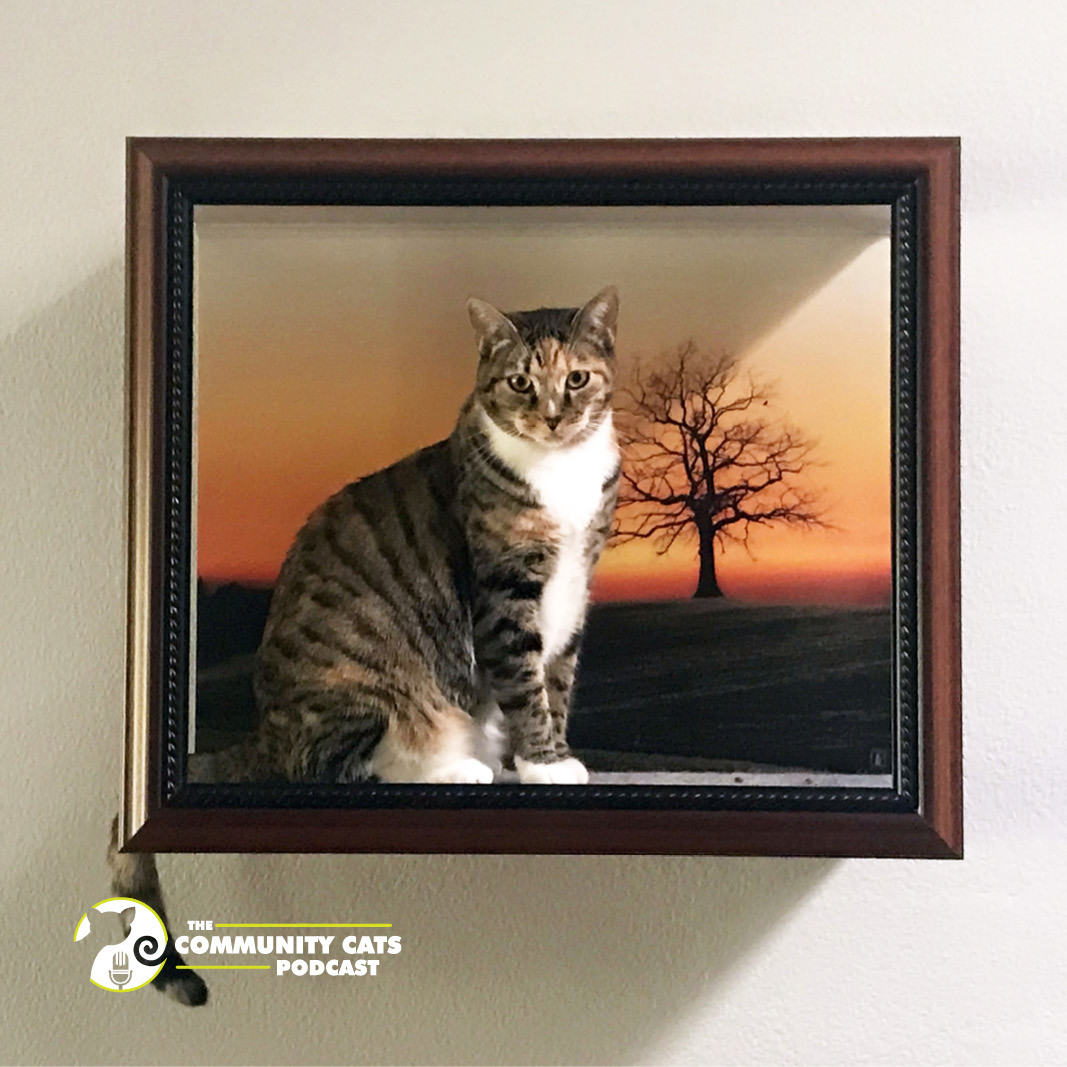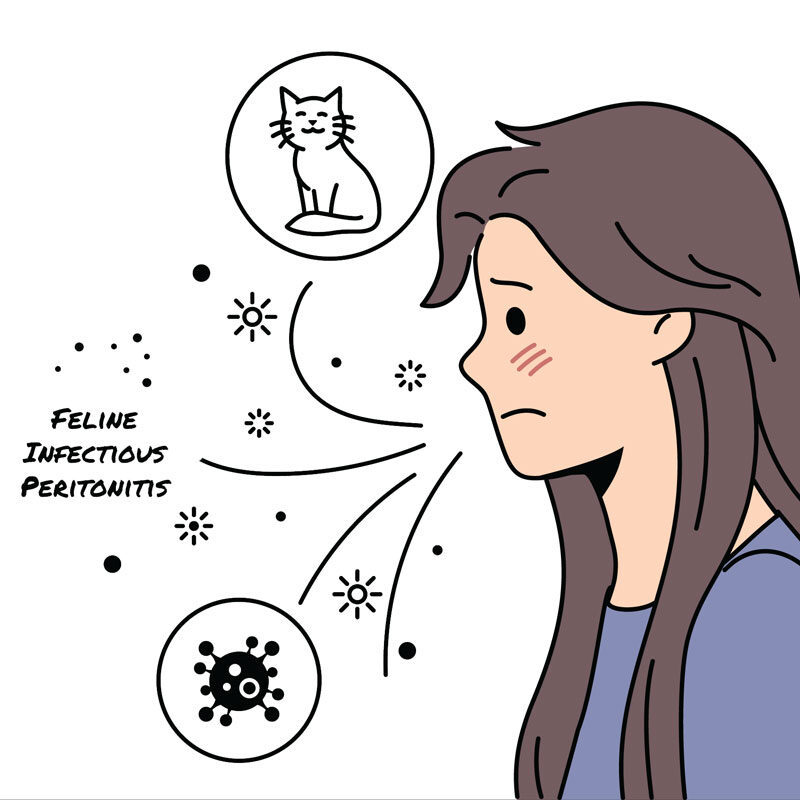
Help When Animal-Loving Humans Have It Ruff with Marisa Hernandez, Director of Operations & Co-Founder Ruff Haven
November 15, 2022
Picture Perfect Cats with Brian Vermeire and Kristina Hughes, Frame Your Feline Founders
November 21, 2022
Contributed by Andrea Dorn, CVT, Vice President of Cat Writers’ Association
You may have heard of a disease referred to as FIP. It usually brings up fear in cat owners’ hearts and thoughts of losing their cats. Feline Infectious Peritonitis (FIP) is the mutated form of a coronavirus. When a cat picks up a coronavirus, they may develop diarrhea, but many times may not show any signs at all. But FIP comes in two forms, the effusive and the dry forms and is very difficult to diagnose.
My focus for several months was on another sick cat. When he improved, I noticed that 16-year-old Question’s appetite had decreased. How long had this been going on?
Question, or Cutie-Q, had never been sick except when his entire litter came down with some undiagnosed enterovirus at just six weeks old. Looking back, I now wonder if that wasn’t the harbinger of trouble years later.
Q was a handsome blue and white tuxedo with an upside-down question mark on his face. His plush fur made me want to bury my face in it – and he didn’t mind. He was a laid-back, cool-dude, except when trouble was near. He’d always be in the middle of it.
My mind drifted back to friends who had to euthanize most of the cats in their cattery when they supposedly had FIP. That was back in the ‘70s when a high coronavirus titer meant FIP. Now we know that titer was of all coronaviruses, not specifically the FIP virus.
As for Q, we hardly had time to think about FIP. He crashed and was nearly dead when we reached the clinic.
My Cutie-Q was gone. Just like that. I had them do a necropsy just to be sure my other cats were safe from anything infectious. Again, FIP kept flashing in my face as an incurable disease.
 While waiting for the results, I dug into all the research papers about FIP online. In addition to being a credentialed veterinary technician, I worked 25 years as a laboratory technician, then research associate in an immunology lab. My mind always wants answers. No one can just tell me this is this, I have to learn it myself.
While waiting for the results, I dug into all the research papers about FIP online. In addition to being a credentialed veterinary technician, I worked 25 years as a laboratory technician, then research associate in an immunology lab. My mind always wants answers. No one can just tell me this is this, I have to learn it myself.
The pathologist’s report came back as simply FIP. I shared all the papers I could find with my veterinarian and we agreed, despite the name, FIP is not as infectious as was previously believed. My other cats should be safe. While the coronavirus can be transmitted to other cats, the mutated virus for FIP is rarely transmitted.
The full scientific explanation is not that easily explained in a short blog entry, but if you’d like more information, you can review the American Association of Feline Practitioner’s new guidelines for diagnosing FIP. You will find a lot of other FIP information there as well.
In Q’s case his symptoms progressed so quickly, we didn’t have time to diagnose, let alone find a treatment for his condition.
What I’ve learned from my Cutie-Q is:
- FIP does not only affect kittens (he was nearly 16 years old)
- FIP can be diagnosed
- FIP can be treated (although the treatment drug is not approved for cats yet in the United States and many other countries)
Improvements like these are so encouraging. Just in my lifetime (okay, so it’s been a long lifetime) FIP has gone from a definitely fatal “diagnosis” to a potentially treatable disease. Cat owners should educate themselves and learn to recognize when their cats are not quite themselves. Encourage your veterinarian to stay informed on current research and new treatment approvals. Despite my personal loss, I am encouraged about the future of FIP research and treatments to come.
About Andrea Dorn

Andrea Dorn, a credentialed veterinary technician, is also the Vice President of the Cat Writers’ Association.
She has been involved in TNVR, showing Household Pets and has been a writer for most of her life. She now lives with three cats and a very confused dog.




